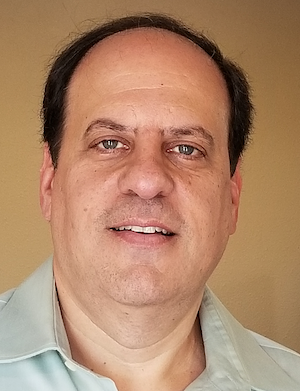maternal mortality
See the following -
Coronavirus Adds New Stress To Antiquated Health Record-Keeping
 The U.S. health care system is on the leading edge of many technologies - except when it comes to passing information between doctors, laboratories, and public health officials. And that could add another snarl to the already troubled effort to test for coronavirus. Overreliance on faxing, phones and paper records is problem enough in ordinary times. Adding thousands of coronavirus tests a day will test the ability of providers, labs, and public health officials to keep track of all the results. Because not all results are automatically downloaded into physicians' records, the doctors may need to log into laboratory web portals or, if all else fails, turn to faxes and phones to learn test results.
The U.S. health care system is on the leading edge of many technologies - except when it comes to passing information between doctors, laboratories, and public health officials. And that could add another snarl to the already troubled effort to test for coronavirus. Overreliance on faxing, phones and paper records is problem enough in ordinary times. Adding thousands of coronavirus tests a day will test the ability of providers, labs, and public health officials to keep track of all the results. Because not all results are automatically downloaded into physicians' records, the doctors may need to log into laboratory web portals or, if all else fails, turn to faxes and phones to learn test results.
- Login to post comments
Health Organizations Implore Congress to Fund Public Health Surveillance Systems
 HLN Consulting joined more than eighty organizations, institutions, and companies in imploring Congress to fund public health surveillance systems. The appropriations request letters – one to the House and one to the Senate – seek one billion in funding over ten years (and $100 million in FY 2020) for the Centers for Disease Control and Prevention (CDC). This funding would allow CDC, state, local, tribal, and territorial health departments to move from sluggish, manual, paper-based data collection to seamless, automated, interoperable IT systems and to recruit and retain skilled data scientists to use them.
HLN Consulting joined more than eighty organizations, institutions, and companies in imploring Congress to fund public health surveillance systems. The appropriations request letters – one to the House and one to the Senate – seek one billion in funding over ten years (and $100 million in FY 2020) for the Centers for Disease Control and Prevention (CDC). This funding would allow CDC, state, local, tribal, and territorial health departments to move from sluggish, manual, paper-based data collection to seamless, automated, interoperable IT systems and to recruit and retain skilled data scientists to use them.
- Login to post comments
How Praekelt.org and Open Source Provide Critical Services to Enable Social Change
 In Eastern and Southern Africa, women are still dying unnecessarily during the basic, natural act of giving life. According to Unicef, “In 2010, close to 58,000 women lost their lives during pregnancy and childbirth, accounting for more than one fifth of all such deaths in the world.” Gustav Praekelt, founder of the South African design and development firm Praekelt.com, was deeply affected by the high maternal mortality rate in his country and realized in 2007 that open source software and mobile phones could help provide critical information and services to combat poverty and maternal mortality rates -- among other social issues -- across the continent and potentially around the world.
In Eastern and Southern Africa, women are still dying unnecessarily during the basic, natural act of giving life. According to Unicef, “In 2010, close to 58,000 women lost their lives during pregnancy and childbirth, accounting for more than one fifth of all such deaths in the world.” Gustav Praekelt, founder of the South African design and development firm Praekelt.com, was deeply affected by the high maternal mortality rate in his country and realized in 2007 that open source software and mobile phones could help provide critical information and services to combat poverty and maternal mortality rates -- among other social issues -- across the continent and potentially around the world.
- Login to post comments
In Guatemala, Shifts in Health Care Strand Communities
...Downloaded on the phone was an open-source app, Kawok, that allowed the community health workers to create patient profiles and access educational videos and best-practice protocols. They had direct lines to a doctor who worked for TulaSalud, whom they could call any time of day or night in an emergency, and the numbers of auxiliary nurses at nearby health centers. The idea was to create a network of professionals, resources and emergency services that community health workers could reach at the touch of a button. “Anytime I could call and ask for help, and they gave it to me,” says Pop Pop. “It was a really useful tool.”...
- Login to post comments
In Military Care, a Pattern of Errors but Not Scrutiny
Since 2001, the Defense Department has required military hospitals to conduct safety investigations when patients unexpectedly die or suffer severe injury. The object is to expose and fix systemic errors, often in the most routine procedures, that can have disastrous consequences for the quality of care. Yet there is no evidence of such an inquiry into Mrs. Zeppa’s death.
- Login to post comments
mHMtaani: US-Supported Program Empowers Community Health Workers Through Mobile Technology
In places like the Deep Sea Slum of Nairobi, Kenya, the dangers associated with pregnancy and child birth are not to be taken lightly. Read More »
- Login to post comments
TulaSalud: An m-health System for Maternal and Infant Mortality Reduction in Guatemala
The Guatemalan NGO (Non-Governmental Organization) TulaSalud has implemented an m-health project in the Department of Alta Verapaz. This Department has 1.2 million inhabitants (78% living in rural areas and 89% from indigenous communities) and in 2012, had a maternal mortality rate of 273 for every 100,000 live births. This m-health initiative is based on the provision of a cell phone to community facilitators (CFs). The CFs are volunteers in rural communities who perform health prevention, promotion and care. Thanks to the cell phone, the CFs have become tele-CFs who able to carry out consultations when they have questions; send full epidemiological and clinical information related to the cases they attend to; receive continuous training; and perform activities for the prevention and promotion of community health through distance learning sessions in the Q’eqchí and/or Poqomchi’ languages...
- Login to post comments